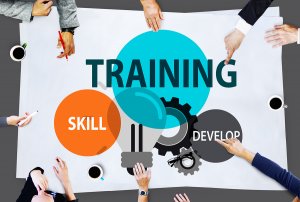 In training design, group work is known to be particularly beneficial. Recent research on how the human brain remembers things has shown why this is the case.
In training design, group work is known to be particularly beneficial. Recent research on how the human brain remembers things has shown why this is the case.
Some interesting research has been carried out by Matthew Lieberman PhD, Professor at UCLA Department of Psychology, who studies social cognitive neuroscience. Lieberman set out to discover what happened in the human brain when a new idea is assimilated when the student knows in advance that they will be required to pass on the new idea and share it with others.
His hypothesis was that the areas of the brain associated with memory and deep encoding would be activated - areas that try to hold on to critical information. In fact, his research showed that these parts of the brain were not obviously activated. Instead, there was strong activity of the brain’s medial prefrontal cortex. This is the area of the human brain which is central to thinking about other people’s goals, feelings, and interests.
He concluded that when we learn new information we employ our social abilities, testing whether the new information would be of value to others who are important to us and not simply assessing its direct personal value. He also suggested that this process of filtering information according to its importance to others activates the reward systems in the brain, so increasing the person’s sense of reputation in the group.
In training design, it is therefore important to present new information in a social context, helping delegates to see that the information will be useful to people who are important to them, such as the team they manage. This allows new neurological connections to be made which are potentially stronger than those formed by simply committing the “facts” to memory.
Whilst the medial prefrontal cortex is not usually involved in forming new memories relating to technical skills, processes or remembering technical data, connecting these kinds of ideas to a social context by using group exercises and team tasks provides an opportunity to generate richer, stronger connections to the new ideas than might otherwise be possible.
This is why scenario and case study training exercises work so well. For example, allowing a delegate to consider the example of how to manage a team member who cuts corners when carrying out a particular procedure. By thinking through this scenario, the delegate activates the social circuits in their brain and generates their own connections between the training points and the social connection.
Human beings are, by nature, social animals. Our evolutionary background has designed us to thrive in communities and to be predisposed to helping one another out.So any training technique that activates the medial prefrontal cortex should obviously be employed. There are many practical ways of doing this. Delegates can share their insights on a given situation, work in small groups and take turns practicing and presenting certain elements of the course, work with learning partners after the course etc.
